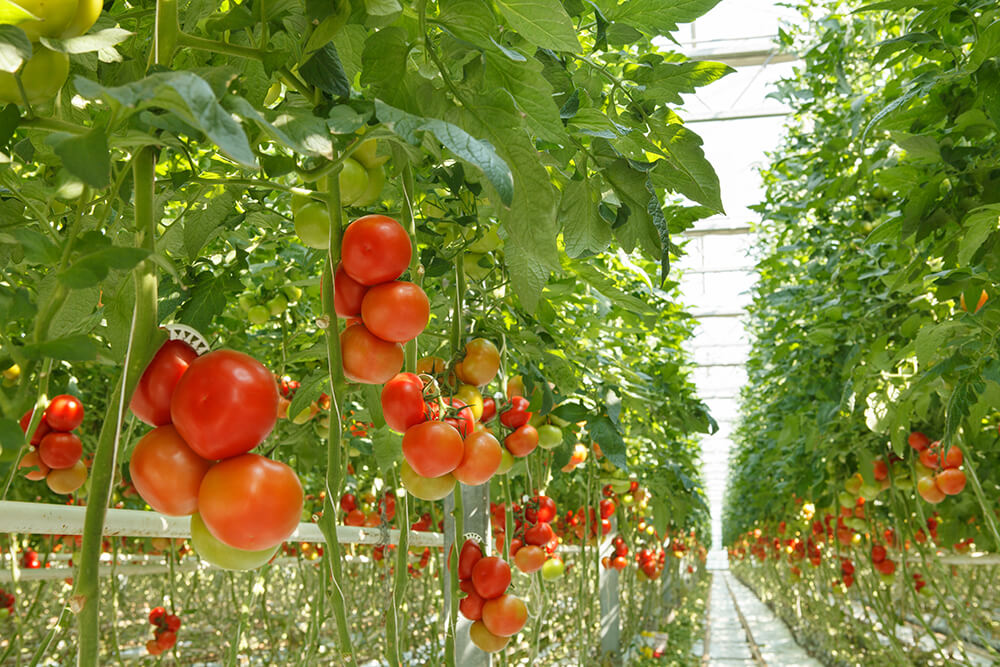
What is Hydroponic system?
Hydroponics is a subset of hydro-culture and is a method of growing plants using mineral nutrient solutions, in water, without soil. Terrestrial plants may be grown with their roots in the mineral solution only, or in an inert medium, such as perlite or gravel. Hydroponics, by definition, is a method of growing plants in water based nutrient rich solution. Hydroponics does not use soil, instead the root system is supported using an inert medium such as perlite, rockwool, clay pellets, peat moss, or vermiculite. The basic premise behind hydroponics is to allow the plants roots to come in direct contact with the nutrient solution, while also having access to oxygen, which is essential for proper growth.
Why Choose Hydroponics?
Hydroponics is an excellent choice for all types of growers. It is a great choice because it gives you the ability to meticulously control the variables that effect how well your plants grow. A fine tuned hydroponic system can easily surpass a soil based system in plant quality and amount of produce yielded.
If you want to grow the biggest, juiciest, yummiest plants you can possible imagine, then hydroponics is the right choice for you. It may seem intimidating at first with all the equipment and work involved, but it will all seem simple enough once you get the hang of the basics. Start small, keep it simple and your hydroponic system will never cease to amaze!
Advantages:
Growing with hydroponics comes with many advantages, the biggest of which is a greatly increased rate of growth in your plants. With the proper setup, your plants will mature up to 25% faster and produce up to 30% more than the same plants grown in soil producing 100% safe and hygiene products of vegetables, fruits, herbs and flowers.
Your plants will grow bigger and faster because they will not have to work as hard to obtain nutrients. Even a small root system will provide the plant exactly what it needs, so the plant will focus more on growing upstairs instead of expanding the root system downstairs.
All of this is possible through careful control of your nutrient solution and pH levels. A hydroponic system will also use less water than soil based plants because the system is enclosed, which results in less evaporation. Believe it or not, hydroponics is better for the environment because it reduces waste and pollution from soil runoff.
Disadvantages:
Despite the fact that a hydroponics system has so many advantages, there are actually a few disadvantages as well. The biggest factor for most people is that a quality hydroponics system of any size will cost more than its soil counterpart. Then again, dirt isn’t exactly expensive and you get what you pay for.
A large scale hydroponics system can take a lot of time to setup if you aren't the most experienced grower. Plus, managing your hydroponics system will take a lot of time as well. You will have to monitor and balance your pH and nutrient levels on a daily basis.
The greatest risk with a hydroponics system is that something like a pump failure can kill off your plants within hours depending on the size of your system. They can die quickly because the growing medium can’t store water like soil can, so the plants are dependent on a fresh supply of water.
There are 2(two) types of Basic Hydroponic Culture Systems such as:
a) Non-circulating or Static Solution Culture and
b) Circulating or Continuous Flowing Culture
1. Non-circulating or Static Solution Culture:
In static solution culture where water and nutrient solution is applying in non-circulatory systems. Here plants are grown in containers of nutrient solution, such as glass Mason jars (typically, in-home applications), plastic buckets, tubs, or tanks. The solution is usually gently aerated but may be un-aerated. If un-aerated, the solution level is kept low enough that enough roots are above the solution so they get adequate oxygen. A hole is cut in the lid of the reservoir for each plant. There can be one too many plants per reservoir. Reservoir size can be increased as plant size increases. A homemade system can be constructed from plastic food containers or glass canning jars with aeration provided by an aquarium pump, aquarium airline tubing and aquarium valves. Clear containers are covered with aluminum foil, butcher paper, black plastic, or other material to exclude light, thus helping to eliminate the formation of algae. The nutrient solution is changed either on a schedule, such as once per week, or when the concentration drops below a certain level as determined with an electrical conductivity meter. Whenever the solution is depleted below a certain level, either water or fresh nutrient solution is added. A Mariotte's bottle, or a float valve, can be used to automatically maintain the solution level. In raft solution culture, plants are placed in a sheet of buoyant plastic that is floated on the surface of the nutrient solution. That way, the solution level never drops below the roots.
2. Circulating or Continuous Flowing Culture:
In continuous-flow solution culture, the nutrient solution constantly flows past the roots. Nutrient Solution and water are continuously run through the plants and medium. It is much easier to automate than the static solution culture because sampling and adjustments to the temperature and nutrient concentrations can be made in a large storage tank that has potential to serve thousands of plants.
Hydroponic Systems:
There are 6 basic types of hydroponic systems; Wick, Water Culture, Ebb and Flow (Flood & Drain), Drip (recovery or non-recovery), N.F.T. (Nutrient Film Technique) and Aeroponics. There are hundreds of variations on these basic types of systems, but all hydroponic methods are a variation (or combination) of these six.
